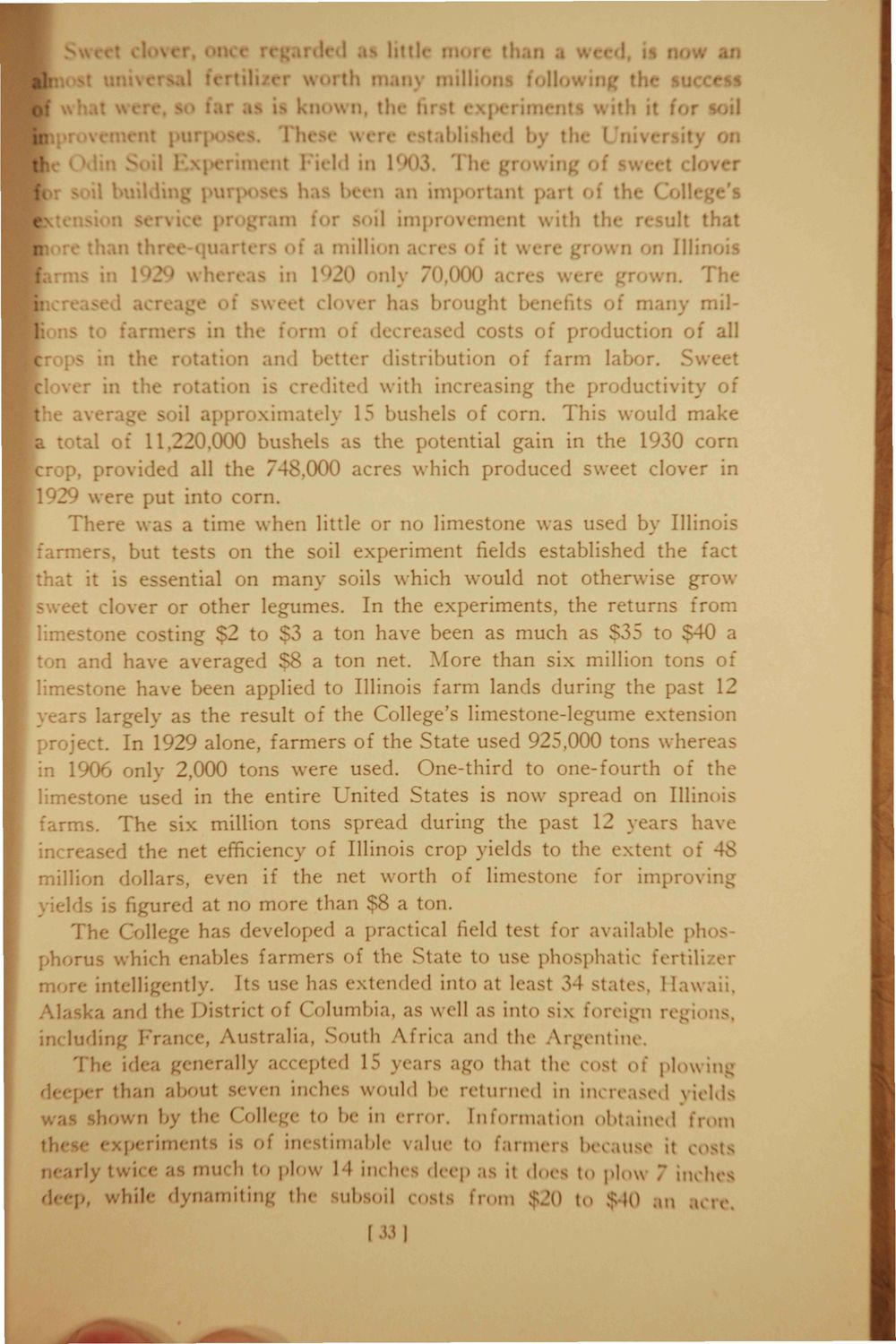Caption: Booklet - One Hundred Million (Impact of UI) (1931)
This is a reduced-resolution page image for fast online browsing.

EXTRACTED TEXT FROM PAGE:
c :< i as l i t t l e tl !, is alt , I I I I I I worth man <mj >llo * e ccess kn the tu si c pc oci h it ft so 1 h< were established I th v<v tl 1 I pc ' i Id in I The gi g t (lover 1 I Id J ha in impoi mt p the 'liege's . ice pi . .in foi ment \ i the n ult that iv re th \ three quar ol I mill. i it v n on Ellin s K in \ > wli in 1920 only 7<>00O . v, 'I he i: la ige of sweel I vtr h brought 1 o man mil 1. • oners in the I \ d reas< 1 costs oi pr luction o II < croj the r :i and 1 ibution of farm labor. Swe clo r in the rotation is cr< with incr ising the pr luctivity o the rag * 1 ; roximately IS bushels of corn. This would make i\ total of 11.220,000 bushels the potential gain in the 1930 corn crop, provided all the 748.000 acres which produced s\\ et clover in 1929 were put into corn. There was a time when little or no limestone was used by Illinois irmei but tests on the soil experiment fields established the fact that it 3 essential on many soils which would not otherwise grow - veet clover or other legumes. In the experiments, the returns from limestone costing $2 to $3 a t n have been as much as S35 to $40 ; ton and have averaged $8 a ton net. More than six million tons o limestone have been applied to Illinois farm lands during the past 12 irs largely as the result of the College's limestone-legume extension pr ct. In 1929 alone, farmers of the State used 925.000 tons whereas in 1906 only 2.000 tons were used. One-third to one-fourth of the limestone used in the entire United States is now spread on Illinois farms. The six million tons spread during the past 12 years have s incn d the net efficiency of Illinois crop yields to the extent of 4 million dollars, even if the net worth of limestone for improvii yiel figun 1 at no more than $8 a ton. Tl Golleg has developed a practical held test for available phos phon which enables f a r m e r s of the State to use phosphatic fertilize m o n intelligently. Its use has extended into at least 34 States, Hawaii Al a and the District of Columbia, as well as into six foreign n "Mil including France, Australia. South Africa and the Argentine, I The idea generally accept* I 15 years ago thai the cost oi plowing deej than about seven inches would be returned in increased yields u .'-• 1 by the < -Uege to be in rror. Information obtained from 1 tl < i perimentS • Of inestimable value to farmers because it Ms itly tW!< • much to plow M inches deep as it does tO plow 7 inches d p, while dynamiting the subsoil costs from : !0 to 10 an a< I 33 1
|